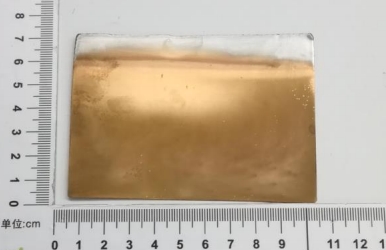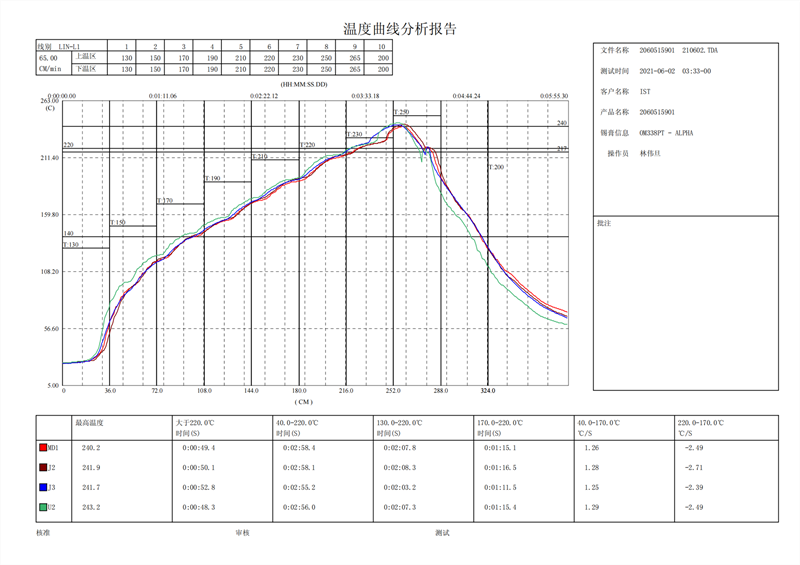Industry Standard Comparison: Consumer-grade connectors typically require 24-48 hours of salt spray testing (e.g., USB-IF baseline), while industrial equipment (e.g., offshore wind monitoring, automotive navigation) demands ≥72 hours (ISO 16750-4).
Failure Modes: Chloride ion penetration causes terminal plating corrosion (contact resistance increase ≥30%), plastic embrittlement (mating force reduction ≥50%), and housing rust (grounding failure).
Process Parameters: Lead-free soldering peaks at 260°C±5°C, requiring connectors to maintain dimensional stability (plastic deformation ≤0.1mm).
Common Issues: Plating blistering (solder void rate >15%), plastic shrinkage (terminal misalignment >0.2mm causing contact failure).
| Property | LCP (AMODEL® A-1135) | Standard PBT |
|---|---|---|
| HDT (1.8MPa) | 280°C | 180°C |
| Water Absorption (23°C/24h) | 0.02% | 0.5% |
| Tensile Strength After 72h Salt Spray | 98% Retention | 75% Degradation |
Value Proposition:
Case Study: Smart wearables using LCP housings demonstrated >10,000 mating cycles (industry average: 5,000) after 2 years in tropical island environments (5% NaCl salt spray).
Experimental Data:
Optimized nitric acid passivation (25% concentration) reduced post-72h salt spray corrosion area to <5 vs="">30% for 304 stainless steel).
Internal drainage grooves improved condensate evacuation efficiency by 60%, eliminating internal corrosion.
Customer Case:
Offshore communication equipment manufacturer achieved 5-year MTBF (vs. 3 years previously) and 40% lower maintenance costs by adopting 316L housings.
Plating Stack:
Base Layer: 2μm electroless nickel (porosity <1.2 pores/cm²) as anti-corrosion barrier.
Top Layer: 0.2μm conventional gold plating (99.99% purity, hardness 180HV), 20% more wear-resistant than standard gold plating.

Performance Benchmarking:
| Plating Type | Post-72h Salt Spray ΔR | Solder Void Rate (260°C) | Cost Index |
|---|---|---|---|
| ENEPIG | +8% | 3% | 100% |
| Excellence-Tech Ni/Au | +12% | 5% | 65% |
Technical Insights:
Nano-Sealant Post-Treatment (70% porosity reduction) and Pulse Plating (Ra≤0.1μm) bridge the performance gap, meeting industrial 72h salt spray requirements (ΔR ≤15%).
Application Case:
Mobile ODM client achieved 28% BOM cost reduction, ΔR +10% post-48h salt spray (spec limit: ≤12%), and >20M pcs/year production.
Mechanism: Silane-based sealant fills micro-pores post-plating, blocking 70% of salt spray penetration paths.
Data:
| Treatment | Post-72h Corrosion Area |
|---|---|
| Untreated | 0.8% |
| Nano-Sealant Applied | 0.2% |
Parameters:
Forward current density: 2A/dm² (10ms pulse), Reverse: 0.5A/dm² (2ms pulse).
Outcome: 30% denser gold crystallization, solder void rate ≤5% (IPC-A-610G Class 3 limit: 10%).
Equipment: Q-FOG CCT-1100 cyclic corrosion chamber (NSS/AASS/CCT modes).
Monitoring: Hourly temperature (35±2°C) and沉降量 (1.5ml/80cm²/h) per IEC 60068-2-52.
Equipment: BTU Pyramax 100N reflow oven (attached temperature profile):
Preheat: 150-180°C (60s)
Reflow: Peak 260°C (10s)
Cooling: <4°C/s
Results: Plastic deformation 0.05mm (spec: ≤0.1mm), terminal shift 0.08mm.

Challenges: 48h salt spray resistance, unit cost ≤$0.15.
Solution:
0.15μm Au + nano-sealant terminals, PA66 housing (non-high-temp).
15% mold cost reduction via structural simplification.
Result: 99.3% salt spray pass rate, $80k annual savings, 300% sales growth.
Challenges: 72h salt spray compliance at industry benchmark costs.
Solution:
0.2μm Au plating + 316L housing with drainage grooves.
50% higher plating line speed (1.2m/min).
Result: ΔR +12% (compliant), 99.8% yield, Amazon supply chain certification.
Balanced Performance: 35% cost savings vs. ENEPIG while passing 72h salt spray and 260°C reflow.
Customization: Gold thickness adjustable (0.1-0.3μm) for consumer to industrial grades.
Third-Party Validation: SGS, CTI-certified test reports with visualized data.